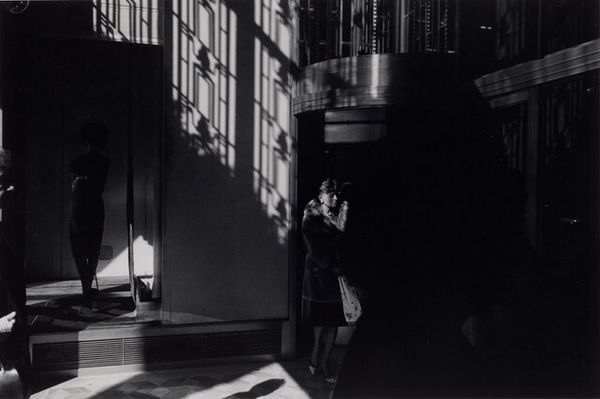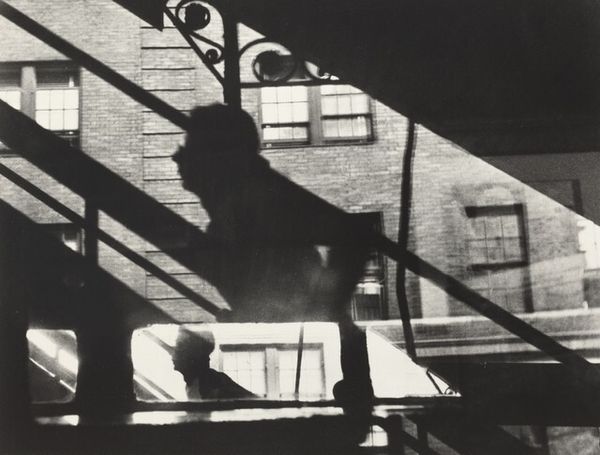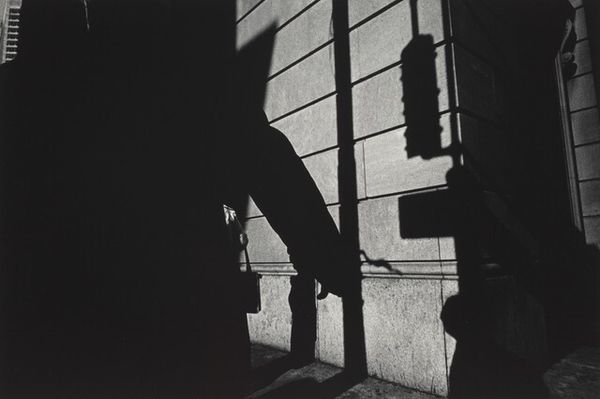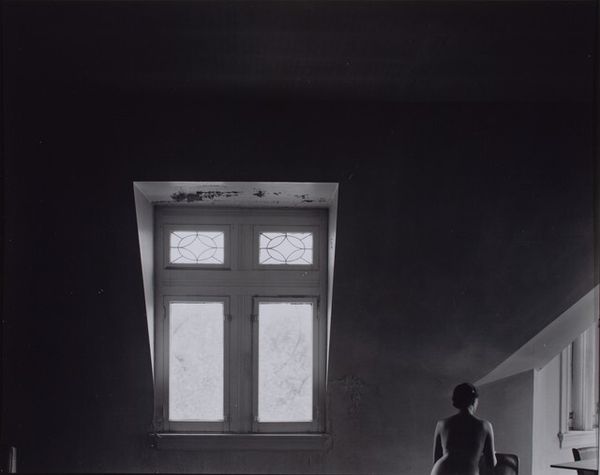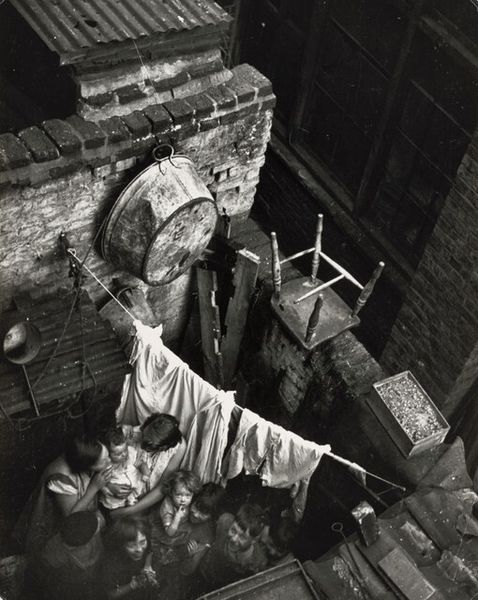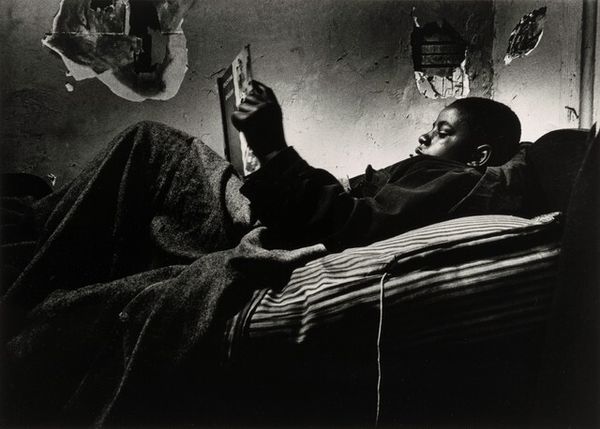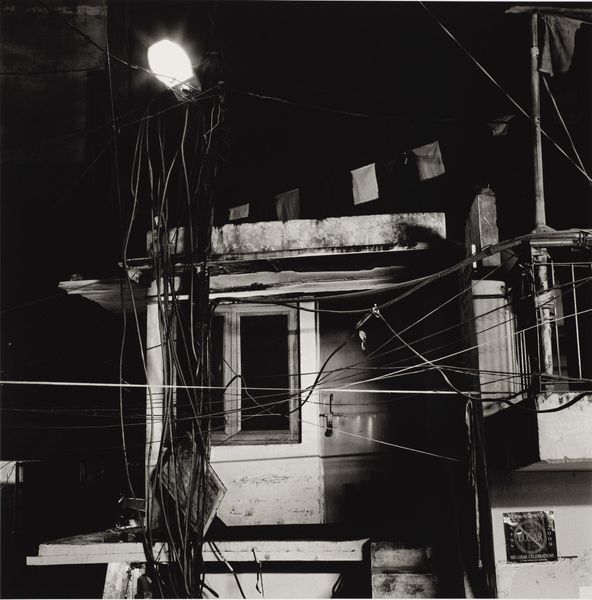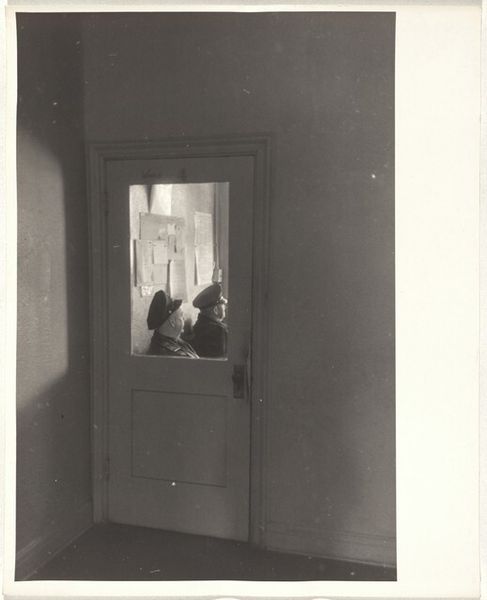
photography, gelatin-silver-print
#
portrait
#
black and white photography
#
harlem-renaissance
#
black and white format
#
social-realism
#
photography
#
black and white theme
#
black and white
#
gelatin-silver-print
#
monochrome photography
#
monochrome
Dimensions: image: 34.1 × 27 cm (13 7/16 × 10 5/8 in.)
Copyright: National Gallery of Art: CC0 1.0
Curator: Gordon Parks’ gelatin silver print, “Red looking for rival gang,” made in 1948, throws us right into a moment thick with tension. Editor: Immediately, I'm struck by the grit. The stark contrast, the chipped paint, and the young man's tense posture…it feels like you can almost taste the smoke and see the streets reflected in his eyes. Curator: Parks made this photograph as part of his work with *Life* magazine. He documented the everyday lives, struggles, and aspirations of gang members in Harlem, aiming to show their humanity. The image wasn't just *of* them, but intended to provoke dialogue *about* them. Editor: I'm curious about Parks' relationship to his subjects, the conditions of working in 1940s Harlem, and the socio-political expectations around photographic representation and race. Did *Life*'s editors, largely white, push Parks to emphasize a particular angle in his narrative? Were these prints widely distributed? Curator: The production aspect is important. A gelatin silver print has its own history. Mass-produced easily to some degree, but demanding in the darkroom. This wasn’t an exclusive, rarefied medium. Street photography lends itself perfectly to reaching many and sparking engagement. This specific gang context feels like its roots are less just the black-and-white divide of the image, and really based in who had and didn't have access to the economic means of success and what their material circumstances really were. Editor: Right, and even beyond economic precarity, let’s think about the accessibility of image-making. Cameras weren't as ubiquitous, were mostly confined to professionals… So Park's presence and choices would have dramatically affected these young men’s stories, especially as they were distributed through magazines. How did that mediation shape perceptions of black youth in America at the time? Did it challenge, reinforce, or further distort stereotypes? Curator: Seeing those complexities helps me avoid easy readings. Thinking of Park’s agency along with these images… it's a reminder that materials are powerful. Editor: Exactly, and those photographs remain incredibly vital historical texts today, pushing viewers to grapple with some tough issues in terms of art, identity, labor, class and social equity.
Comments
No comments
Be the first to comment and join the conversation on the ultimate creative platform.
